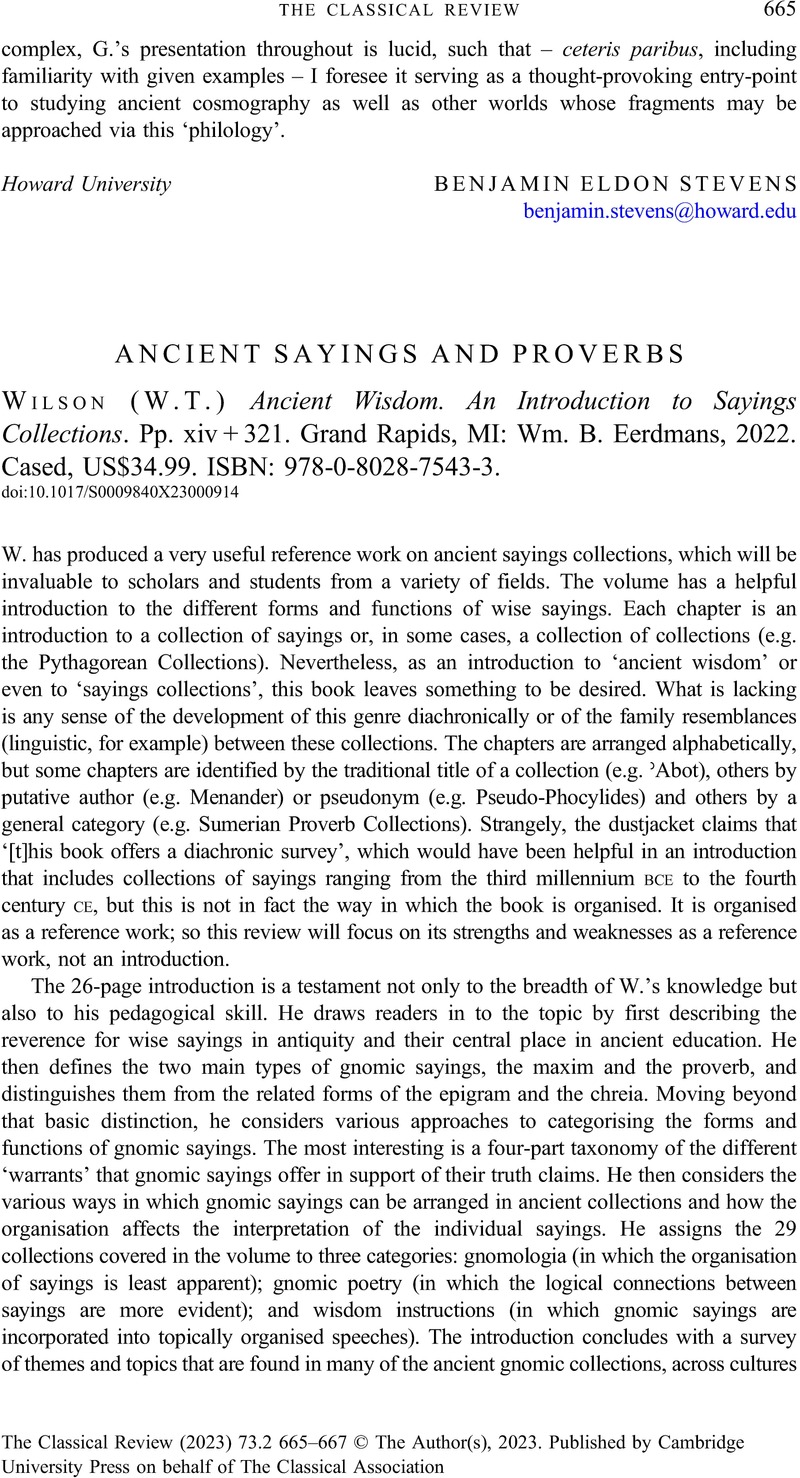No CrossRef data available.
Article contents
ANCIENT SAYINGS AND PROVERBS - (W.T.) Wilson Ancient Wisdom. An Introduction to Sayings Collections. Pp. xiv + 321. Grand Rapids, MI: Wm. B. Eerdmans, 2022. Cased, US$34.99. ISBN: 978-0-8028-7543-3.
Review products
(W.T.) Wilson Ancient Wisdom. An Introduction to Sayings Collections. Pp. xiv + 321. Grand Rapids, MI: Wm. B. Eerdmans, 2022. Cased, US$34.99. ISBN: 978-0-8028-7543-3.
Published online by Cambridge University Press: 05 June 2023
Abstract
An abstract is not available for this content so a preview has been provided. Please use the Get access link above for information on how to access this content.

Information
- Type
- Reviews
- Information
- Copyright
- Copyright © The Author(s), 2023. Published by Cambridge University Press on behalf of The Classical Association


